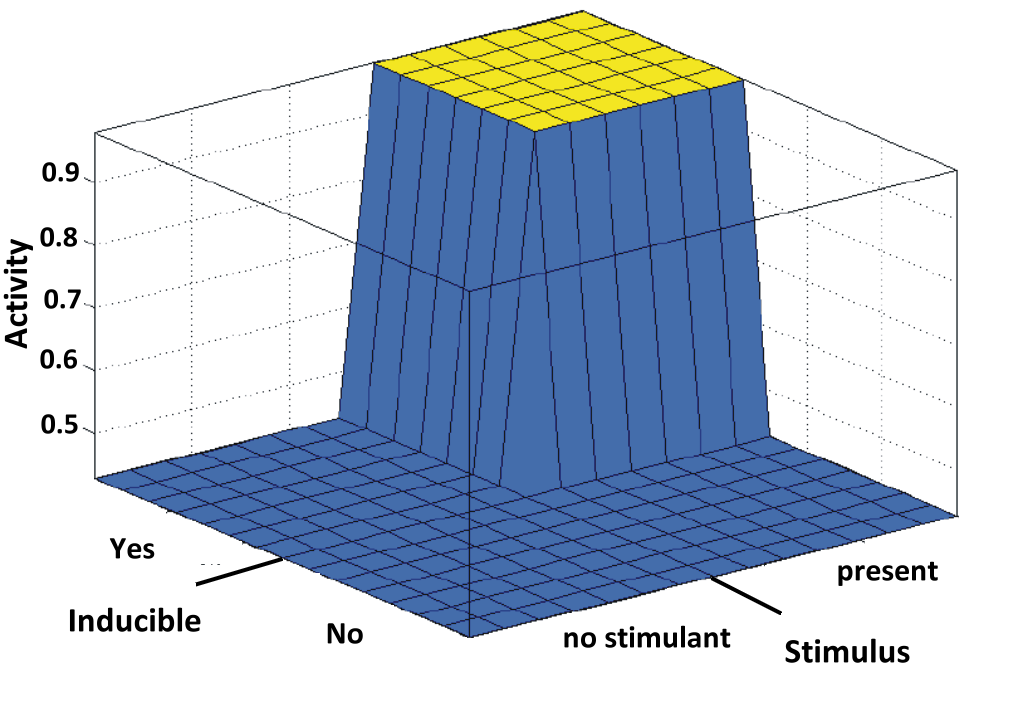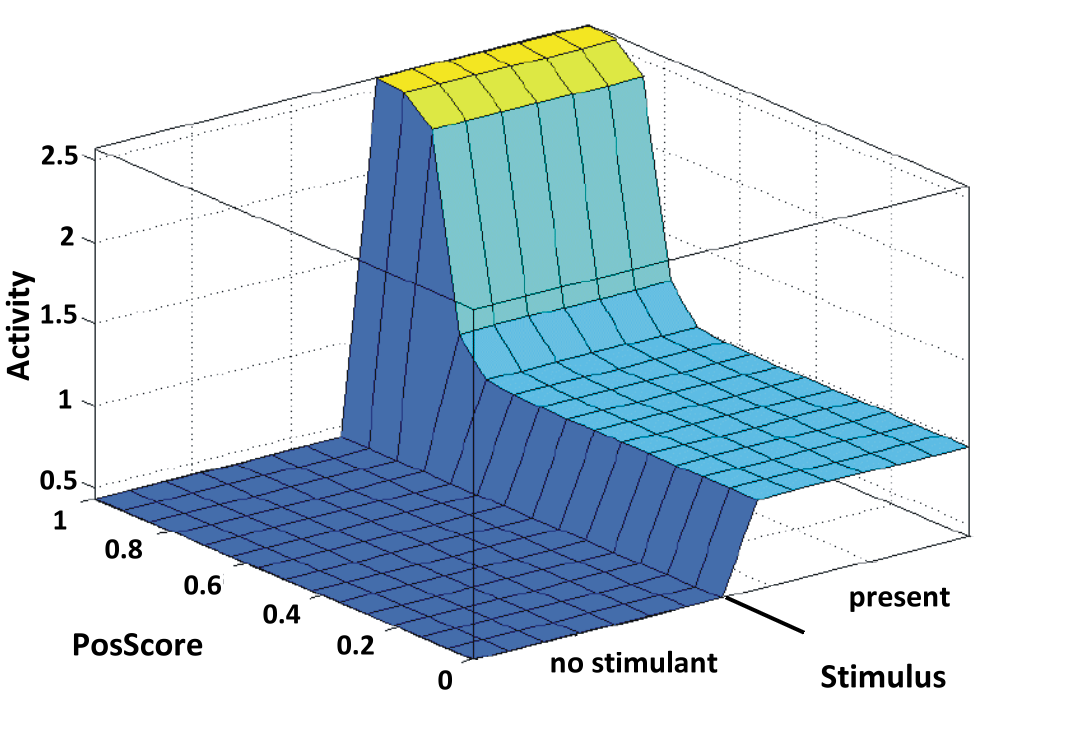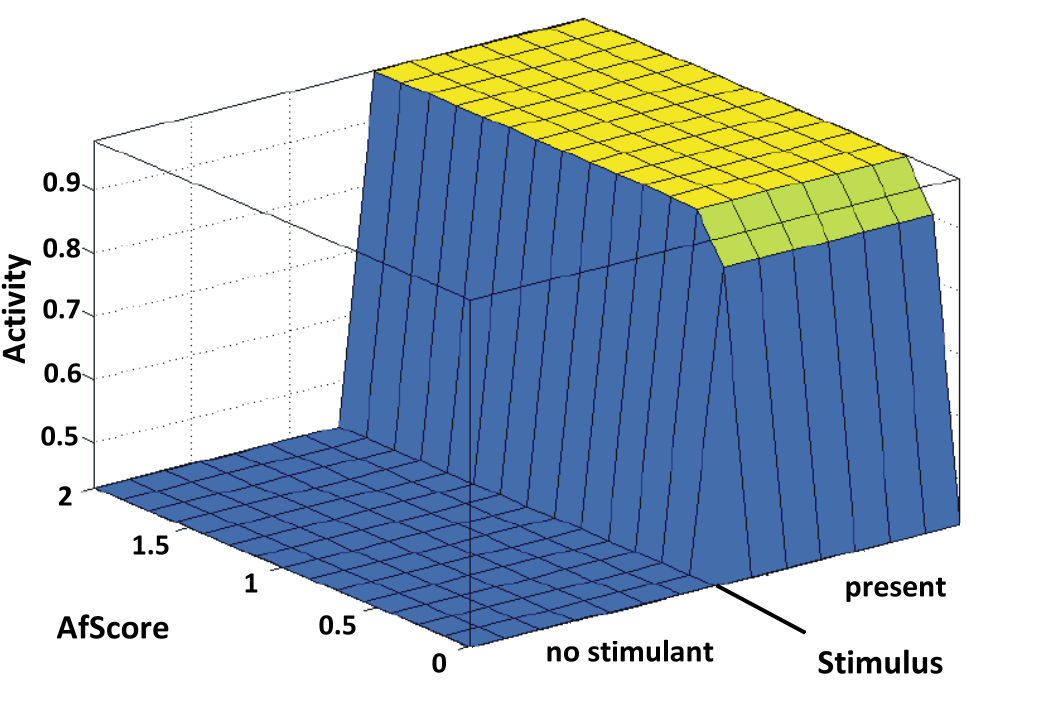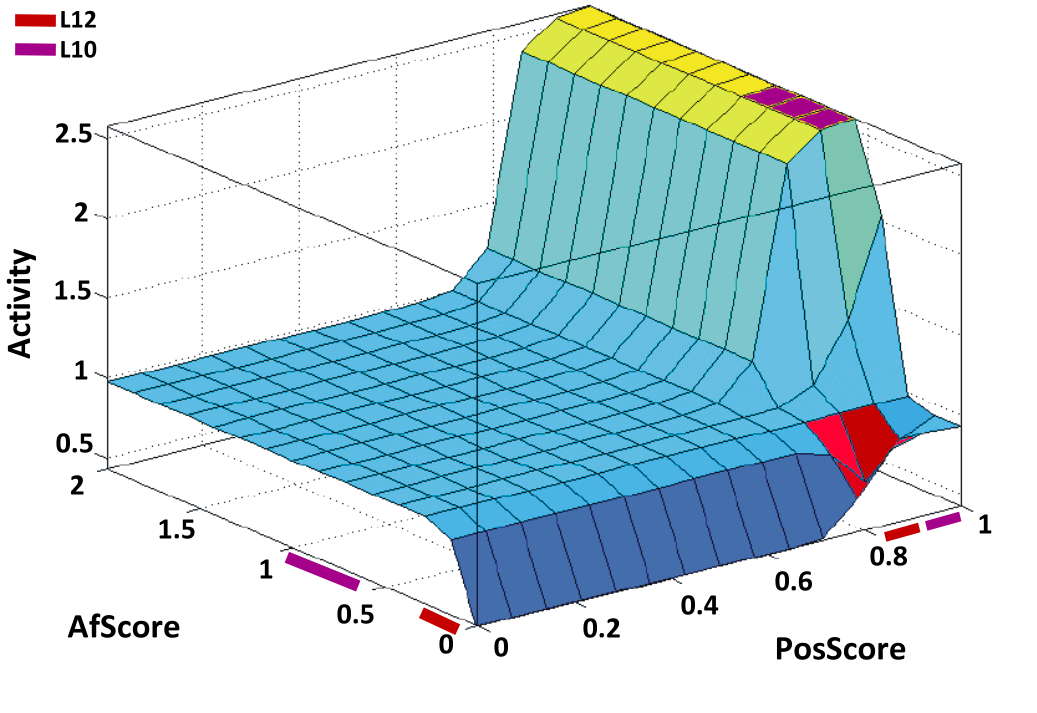Team:Heidelberg/HEARTBEAT network/Results
From 2009.igem.org
Naoiwamoto (Talk | contribs) |
Naoiwamoto (Talk | contribs) (→Modeling inducible promoters) |
||
| Line 14: | Line 14: | ||
By using our model we were able to capture the basic behaviour of an inducible promoter (Fig.1). | By using our model we were able to capture the basic behaviour of an inducible promoter (Fig.1). | ||
| - | [[Image:HD09_NFkB_01_induc-stim.png|center|thumb|300px|'''Figure 1: ''']] | + | [[Image:HD09_NFkB_01_induc-stim.png|center|thumb|300px|'''Figure 1: Activity of an inducible promoter. Promoter of interest is only active if it is inducible and a stimulation is present.''']] |
| - | Once this was accomplished, we aimed for capturing the dependency of the activity of the promoter on more heterogeneous parameters, such as affinity score, position score and presence stimulation (Figs. 2a and 2b). | + | Once this was accomplished, we aimed for capturing the dependency of the activity of the promoter on more heterogeneous parameters, such as affinity score, position score and presence stimulation (Figs. 2a and 2b). As expected, promoter activity was observed only in the presence of a certain stimulation. '''(Describe slope)'''? |
{| | {| | ||
| - | |[[Image:HD09_NFkB_02aPosStim.png|none|thumb|300px|'''Figure 2a: ''']] | + | |[[Image:HD09_NFkB_02aPosStim.png|none|thumb|300px|'''Figure 2a: Activity of an inducible promoter depending on the position score (PosScore)''']] |
| - | |[[Image:HD09_NFkB_02bAfStim.png|none|thumb|300px|'''Figure 2b: ''']] | + | |[[Image:HD09_NFkB_02bAfStim.png|none|thumb|300px|'''Figure 2b: Activity of an inducible promoter depending on the affinity score (AfScore)''']] |
|} | |} | ||
<!-- Fig. 1 shows the activity depending on the stimulus (yes/no) as well as on the type of promoter (inducible/constitutive). By this, high promoter activity is only observed when a promoter is inducible upon stimulation. | <!-- Fig. 1 shows the activity depending on the stimulus (yes/no) as well as on the type of promoter (inducible/constitutive). By this, high promoter activity is only observed when a promoter is inducible upon stimulation. | ||
| Line 25: | Line 25: | ||
Fig. 3 shows the combinatorial effect of PosScore and AfScore for an inducible promoter upon stimulation. An optimal promoter activity is observed for both high position and affinity score. --> | Fig. 3 shows the combinatorial effect of PosScore and AfScore for an inducible promoter upon stimulation. An optimal promoter activity is observed for both high position and affinity score. --> | ||
| - | + | Finally, we tested the combinatorial dependency of promoter activity on both position and affinity for an inducible promoter upon stimulation (Fig. 3). According to our result, an optimal promoter activity is obtained only in case the promoter sequence harbours a high position as well as a high affinity score. | |
[[Image:HD09_NFkB_03PosAf.png|none|thumb|300px|'''Figure 3: ''']] | [[Image:HD09_NFkB_03PosAf.png|none|thumb|300px|'''Figure 3: ''']] | ||
Revision as of 22:07, 19 October 2009
HEARTBEAT Fuzzy ModelingResultsModeling inducible promotersBased on prior data analysis of data derived from flow cytometry experiments using inducible synthetic NFkB responsive promoters we developed a fuzzy controller which reflects the behavior of inducible promoters. By using our model we were able to capture the basic behaviour of an inducible promoter (Fig.1). Once this was accomplished, we aimed for capturing the dependency of the activity of the promoter on more heterogeneous parameters, such as affinity score, position score and presence stimulation (Figs. 2a and 2b). As expected, promoter activity was observed only in the presence of a certain stimulation. (Describe slope)? Finally, we tested the combinatorial dependency of promoter activity on both position and affinity for an inducible promoter upon stimulation (Fig. 3). According to our result, an optimal promoter activity is obtained only in case the promoter sequence harbours a high position as well as a high affinity score.
what is the model good for: importantly, our model captures the behaviour of an inducible promoter. we next wondered wheter we would be able to establish the same for an non-inducible promoter
from here: constitutives
point out: different promoter design, different experimental measuerment, as well as literature data -> final model? and then jump to final model.
|
 "
"



